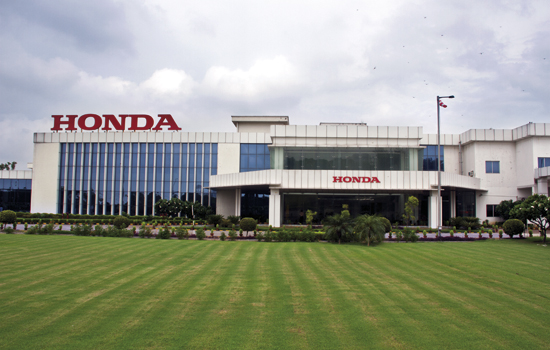
Honda Car India’s two decades journey from a premium carmaker to the mass market has diluted the hugely reliable brand, and its ambitious foray into the compact car market has dented its encrypted niche quotient much to the dislike of its potential customer.
Honda has been known for its different league of cars that changed India’s automobile landscape, as its highly engineered products brought the rich driving experience much beyond the rudimentary Maruti Suzuki cars or any indigenous Indian brands.
Its penchant for quality made Honda’s debutant City sedan a runaway success in 1998, and soon came the hugely success SUV badged CR-V proving to be other blockbusters for the company, followed by the hugely successful Civic that forever changed the executive sedan market with its crispy upmarket styling.
Those were the days when it went from its first outlet Courtesy Honda in Chandigarh and spread its wings to a pan-India network. Honda was trying to replicate the global experience to buy the best engineered cars.
However, over the years the newly launched cars and SUV’s are considered much diluted products than their predecessors, that has taken thee sheen off from this Japanese coveted brand. Something it is finding hard to digest after failing to imitate the success of Maruti Suzuki or the South Korean Hyundai Motor India; even after a superlative start
Its efforts to imitate the niche segment strategy into the mass market haven’t worked quite well. Honda known for its reliable and technically advanced, fuel efficient cars, but the tinkering to change for India its bold and daring design, with a heavy dose of localization has left it badly wounded.
Though, still the fourth largest Indian carmaker, poor response to its recent products; right from lackluster and overpriced Jazz hatchback, to the compact dud Brio, has lead to a sharp decline in volumes that quietly blunted Honda India operations.
Just a small success came its way with the diesel fired Amaze its only notable success in the recent past. The foray into diesel, a first from Honda developed exclusively for India, marking a feeble comeback for Honda in India as sales zoomed 83% to 1,34,339 units in 2014. The recent ones like Mobilio and the recent BR-V SUV turned complete disaster, even as these segments are on a roller coaster drive. Last fiscal was a bit higher in absolute numbers but ended with an 18% decline to 1,57,313 cars over the previous year.
“Honda could not replicate its impeccable petrol finesse in diesel. Its known for its superior petrol worldwide, but the diesel was noisy and rattling, swinging its customers to competitors,” says an analyst, preferring not to be named.
Industry veterans say that the company failed to read the Indian mind and develop products accordingly. And recent reverses may force Honda to retreat into its premium shell with the company actively embracing its green-shoe models like the Civic back to India as it strives to re-tap the premium quotient.
Even as Yoichiro Ueno, President & CEO of Honda Cars India, says that India is quite a complex market, and yet to reach the global standards of the automotive industry, he told media sometime back.
Motoring enthusiasts say Honda’s blend of crisp and strong design cues mated to new architecture in a near perfect petrol engine has been a general experience of any Honda customers,, which got changed or diluted with its new cars.
Honda’s problems started sometime in 2011as Indian customer shifted preference to diesel and the petrol only company didn’t had any answer. These were times when all carmakers were pumping out diesel and Honda didn’t have the technology to fire its cars with the Indian priced diesels.
Honda was late to react to market conditions. Dieselisation has taken a toll on it. Companies like Mahindra& Mahindra, Maruti Suzuki and Hyundai ruled the roost with diesel models and fired the market.
The market started shift from 2010 onwards and turned towards diesel by 2012, when it race passed petrol variants in the domestic market and Honda had only petrol models in its portfolio. It took another two years to bring diesel to India as its few diesel powertrains were too sophisticated for our market. Besides, other problems of fewer products, old models compared to entrenched rivals and its late reaction to ‘dieselisation’ had the biggest impact on it future.
Also, frequent changes in the corporate structure resulted in absence of a long-term strategy to deal with the crises. The company has seen four CEO’s in the past six years with frequent recalls changing management abruptly, and hindering operations.
The only way back into India is to get back its premium mojo. Honda exited the premium segment, but slowly is getting back its cannons. After re-launching Accord this year, plans for Civic are being materialized. And its new models may also be something like Freed and a compact car below the Brio hatch. The company has seen some success with the recent success of its cross version the WR-V that has picked up well and has made to top five seller in its segment.
Facing abject reverses since 2011; the brand Honda has declined drastically in the car business and customers don’t find it an “Exciting Enough” brand, and its efforts to claw back may get back the class and customers, it may have lost to its otherwise weaker competitors.


